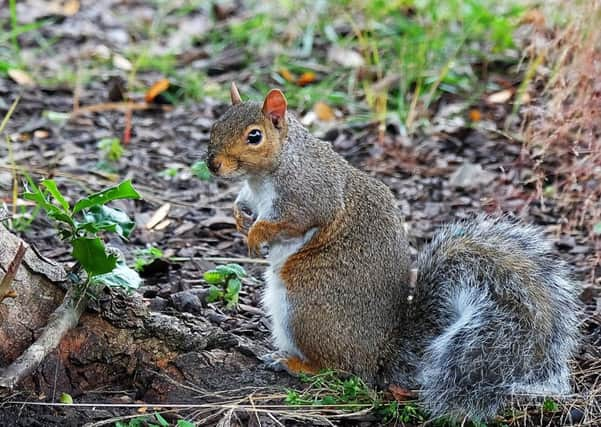Humans to blame for dominance of grey squirrels


The rodents were imported from North America in the 1800s and spread rapidly across the UK, stripping bark from trees, robbing songbird nests, and driving native red squirrels from their habitats.
Common logic suggested that this domination came about through different populations of grey squirrels interbreeding and producing “super squirrels” that were better able to thrive.
Advertisement
Hide AdAdvertisement
Hide AdBut the outcome of a new study, which compared the DNA of nearly 1,500 grey squirrels in the UK and Italy, suggests different squirrel populations are today still genetically distinct and, in many cases, recently established populations of grey squirrels have relatives living far away. For instance, grey squirrels in Aberdeen were found to be most closely related to populations around the New Forest area of Hampshire.
The scientists said that only human intervention could have enabled the squirrels to cross such great distances and therefore humans were largely responsible for their conquest.
Dr Lisa Signorile, who led the research, said: “It has been thought since the 1930s that grey squirrels were all the same, spreading across the country as one invasion front. After a century, genetics has proved that this isn’t correct. They are not that good at breeding and mixing.
“Grey squirrels are not as crazy invaders as we think - their spread is far more our own fault.”
Advertisement
Hide AdAdvertisement
Hide AdShe named one of the worst offenders to blame for the spread of grey squirrels as the 11th Duke of Bedford, Herbrand Russell. A keen conservationist, he released large numbers of the animals from his home at Woburn Park and introduced them to many regions of the UK.
One of his most serious misdemeanors was releasing grey squirrels in London’s Regent’s Park, probably leading to the capital’s epidemic of greys.
“It was a time when we didn’t know invasive species could cause so much damage,” said Dr Signorile, whose findings are published in the journals Biological Conservation, and Diversity And Distributions.
Grey squirrels do not get off scot-free, however. They still out-compete red squirrels and carry diseases that only kill reds, and need to be controlled, said Dr Signorile.
Advertisement
Hide AdAdvertisement
Hide AdShe added: “The public also needs to be aware of the risk of even accidentally moving squirrels.
“People think grey squirrels are already everywhere, so it is not a problem, but it can be, especially in areas of Scotland where there are not yet established populations.”
Lessons learned from the study could be applied to other invasive species that stood to benefit from human activity, she said.
These included those that are considered attractive, such as London’s ring-necked parakeets and Chinese water deer.